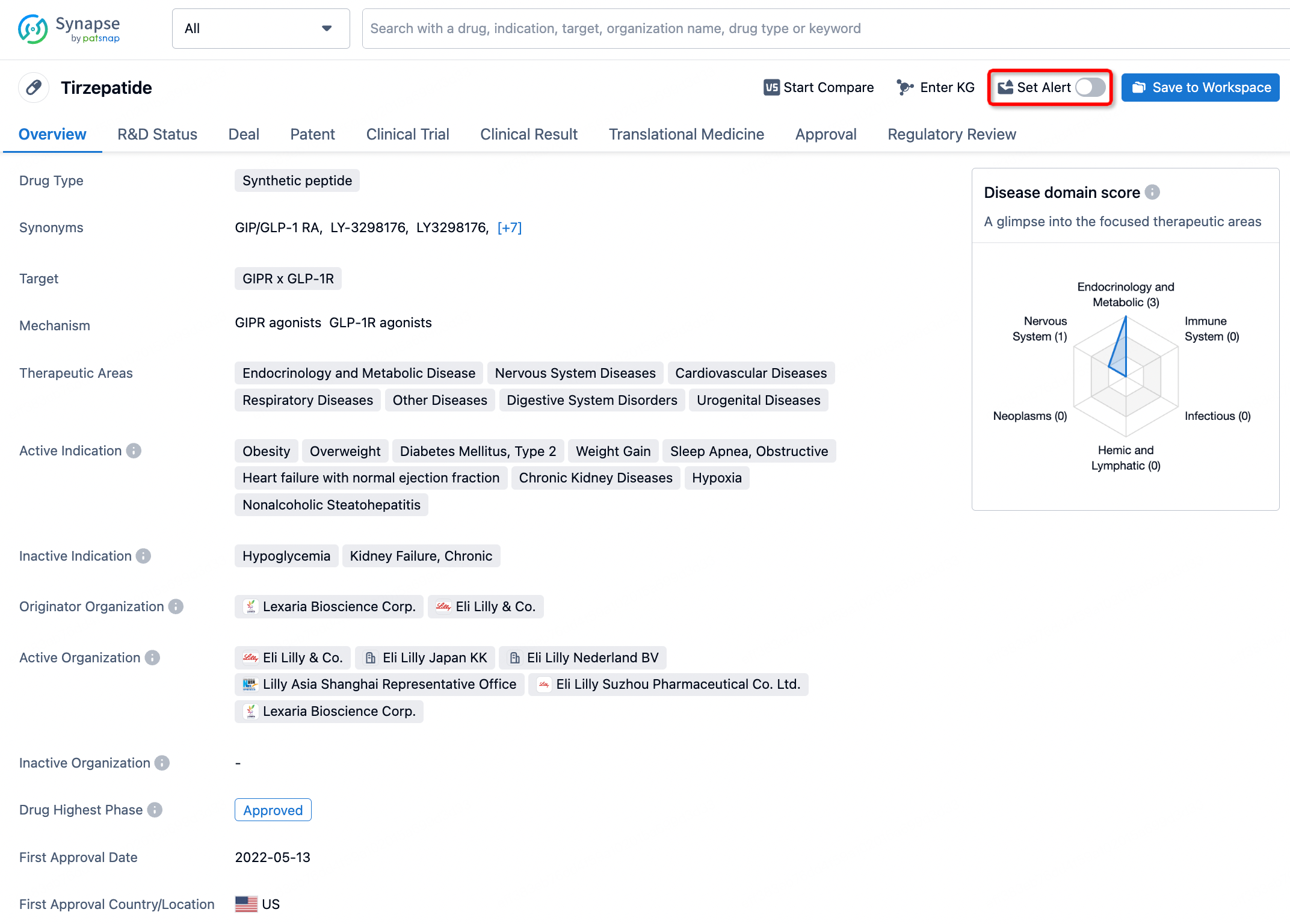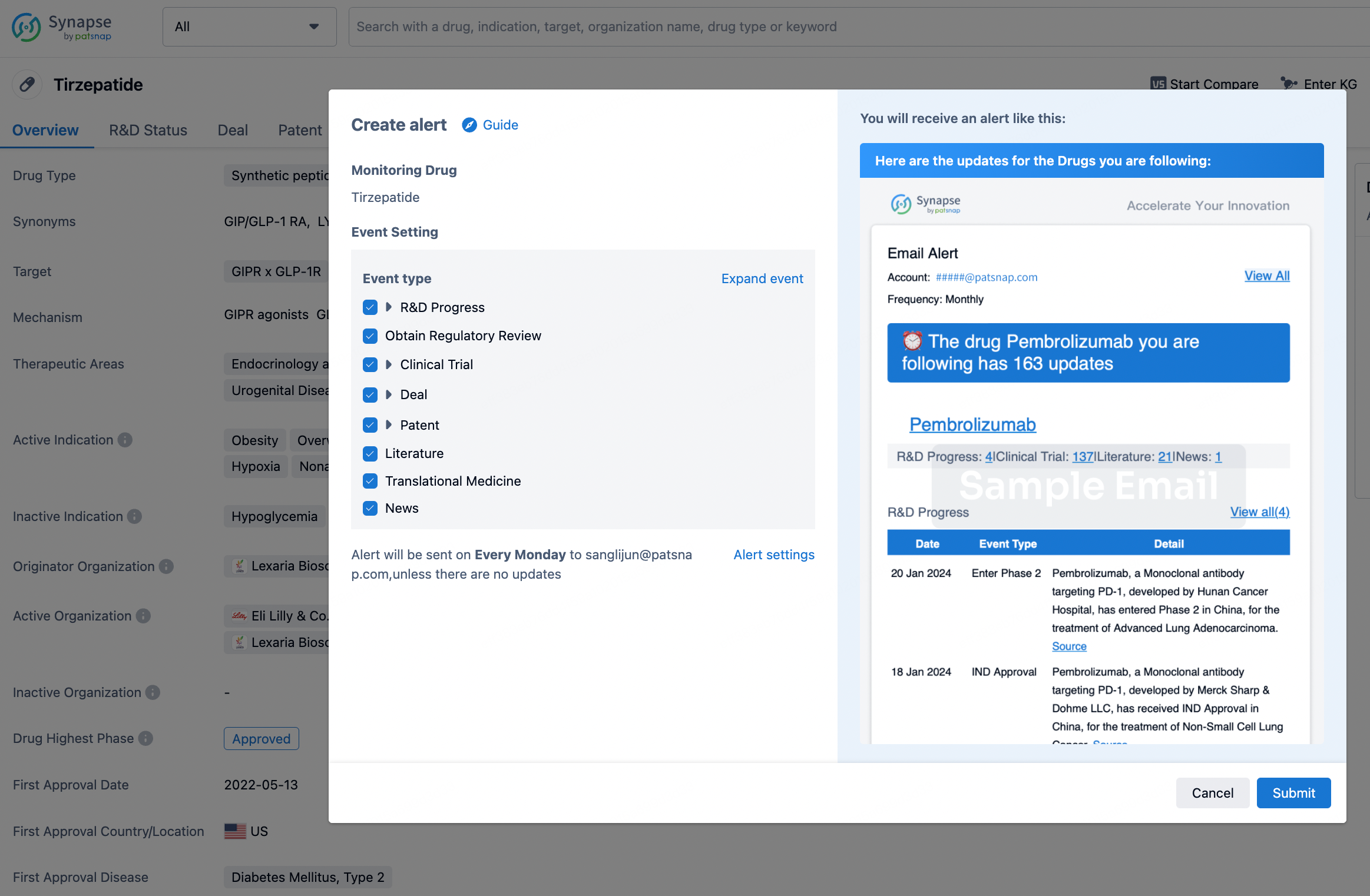Request Demo
What is the mechanism of Neurexan?
18 July 2024
Neurexan is a homeopathic remedy commonly used for alleviating stress, anxiety, and sleep disorders. Understanding its mechanism of action involves exploring both its homeopathic principles and the biological effects it may have on the body. While the precise mechanisms are not fully understood, there are several plausible explanations for its effects.
Neurexan is composed of four active ingredients: Passionflower (Passiflora incarnata), Oat (Avena sativa), Valerian (Valeriana officinalis), and Coffea tosta. Each of these components is known for its potential calming and sedative properties, which can contribute to Neurexan's overall effect.
Passionflower is a well-known herb traditionally used for anxiety and insomnia. It is believed to work by increasing levels of gamma-aminobutyric acid (GABA) in the brain. GABA is an inhibitory neurotransmitter that helps to calm neural activity, leading to relaxation and reduced anxiety.
Oat has both nutritional and therapeutic benefits. Nutritionally, oats are a source of essential vitamins and minerals that support overall health. Therapeutically, oats have been used to relieve stress and anxiety. The exact mechanism is not well-documented, but it is believed that their high content of B-vitamins plays a role in stabilizing mood.
Valerian is another herb traditionally used for its sedative properties. It is thought to work by inhibiting the breakdown of GABA in the brain, similar to the action of certain prescription medications for anxiety and sleep disorders. This leads to prolonged GABA activity, which can help to calm the nervous system.
Coffea tosta, or roasted coffee, is included in a homeopathic form, which means it is highly diluted. In homeopathy, substances that can cause symptoms in a healthy person are used in diluted form to treat similar symptoms in a sick person. The inclusion of Coffea tosta may seem counterintuitive, as coffee is typically a stimulant. However, in its homeopathic form, it is believed to help counteract overactive mental states and promote relaxation and sleep.
The combination of these ingredients in Neurexan is designed to leverage their individual calming effects to produce a synergistic result. However, because Neurexan is a homeopathic remedy, its mechanism also involves principles unique to homeopathy, such as the "law of similars" and the use of highly diluted substances.
It is important to note that the scientific community remains divided on the efficacy of homeopathic treatments. Some studies suggest that homeopathic remedies can have an effect beyond placebo, while others find no significant difference between homeopathic treatments and placebos. The mechanism by which homeopathic remedies work is still a subject of ongoing research and debate.
In summary, Neurexan's mechanism of action likely involves a combination of biological effects from its herbal components and homeopathic principles. While the exact pathways are not fully elucidated, the ingredients are known for their potential calming and sedative properties, which can help alleviate symptoms of stress, anxiety, and sleep disorders. Further research is needed to fully understand how Neurexan works at a molecular level and to validate its clinical efficacy.
Neurexan is composed of four active ingredients: Passionflower (Passiflora incarnata), Oat (Avena sativa), Valerian (Valeriana officinalis), and Coffea tosta. Each of these components is known for its potential calming and sedative properties, which can contribute to Neurexan's overall effect.
Passionflower is a well-known herb traditionally used for anxiety and insomnia. It is believed to work by increasing levels of gamma-aminobutyric acid (GABA) in the brain. GABA is an inhibitory neurotransmitter that helps to calm neural activity, leading to relaxation and reduced anxiety.
Oat has both nutritional and therapeutic benefits. Nutritionally, oats are a source of essential vitamins and minerals that support overall health. Therapeutically, oats have been used to relieve stress and anxiety. The exact mechanism is not well-documented, but it is believed that their high content of B-vitamins plays a role in stabilizing mood.
Valerian is another herb traditionally used for its sedative properties. It is thought to work by inhibiting the breakdown of GABA in the brain, similar to the action of certain prescription medications for anxiety and sleep disorders. This leads to prolonged GABA activity, which can help to calm the nervous system.
Coffea tosta, or roasted coffee, is included in a homeopathic form, which means it is highly diluted. In homeopathy, substances that can cause symptoms in a healthy person are used in diluted form to treat similar symptoms in a sick person. The inclusion of Coffea tosta may seem counterintuitive, as coffee is typically a stimulant. However, in its homeopathic form, it is believed to help counteract overactive mental states and promote relaxation and sleep.
The combination of these ingredients in Neurexan is designed to leverage their individual calming effects to produce a synergistic result. However, because Neurexan is a homeopathic remedy, its mechanism also involves principles unique to homeopathy, such as the "law of similars" and the use of highly diluted substances.
It is important to note that the scientific community remains divided on the efficacy of homeopathic treatments. Some studies suggest that homeopathic remedies can have an effect beyond placebo, while others find no significant difference between homeopathic treatments and placebos. The mechanism by which homeopathic remedies work is still a subject of ongoing research and debate.
In summary, Neurexan's mechanism of action likely involves a combination of biological effects from its herbal components and homeopathic principles. While the exact pathways are not fully elucidated, the ingredients are known for their potential calming and sedative properties, which can help alleviate symptoms of stress, anxiety, and sleep disorders. Further research is needed to fully understand how Neurexan works at a molecular level and to validate its clinical efficacy.
How to obtain the latest development progress of all drugs?
In the Synapse database, you can stay updated on the latest research and development advances of all drugs. This service is accessible anytime and anywhere, with updates available daily or weekly. Use the "Set Alert" function to stay informed. Click on the image below to embark on a brand new journey of drug discovery!
AI Agents Built for Biopharma Breakthroughs
Accelerate discovery. Empower decisions. Transform outcomes.
Get started for free today!
Accelerate Strategic R&D decision making with Synapse, PatSnap’s AI-powered Connected Innovation Intelligence Platform Built for Life Sciences Professionals.
Start your data trial now!
Synapse data is also accessible to external entities via APIs or data packages. Empower better decisions with the latest in pharmaceutical intelligence.


